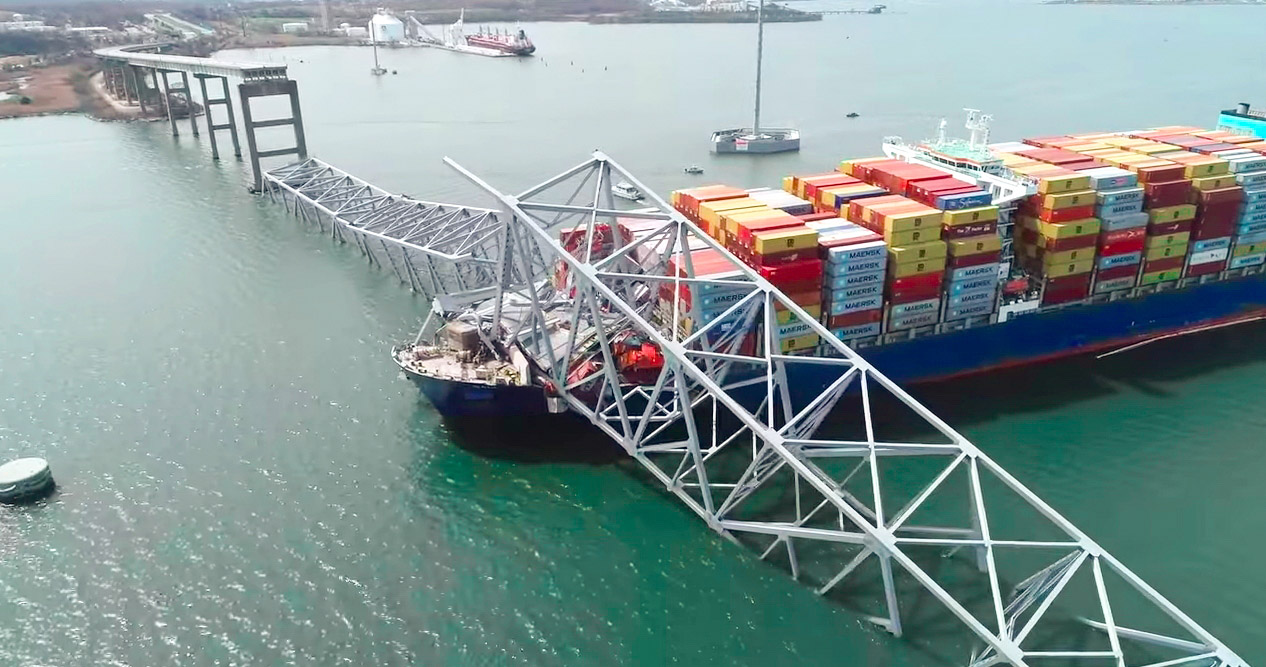
(Photo: National Transportation Safety Board)
Port of Baltimore collapses, could impact soy shipments
March 28, 2024 | Bethany Baratta
Around 1:30 a.m. on Tuesday, March 26, personnel on board the container ship Dali alerted the Maryland Department of Transportation that they had lost control of their vessel. Moments later—after recovering power and losing power again—the ship, destined for Colombo, Sri Lanka, struck a support column of the Francis Scott Key Bridge, sending people and vehicles into the Patapsco River.
The container ship, which is about 984 feet long and 157 feet wide left Baltimore around 1 a.m. Eastern before striking the 1.6-mile-long bridge. The container ship had been chartered by the Danish shipping company Maersk, according to VesselFinder.com.
The Port of Baltimore is the leading port for the import and export of automobiles and light trucks, according to Mike Steenhoek, executive director of the Soy Transportation Coalition (STC).
“While the Port of Baltimore is not a significant port region for soybeans and grain, it obviously is a significant resource for the broader economy,” says STC’s Steenhoek. Comprised of 14 state soybean boards (including the Iowa Soybean Association), the American Soybean Association, and the United Soybean Board, STC works to position the soybean industry to benefit from a transportation system that delivers cost-effective, reliable, and competitive service. The 14 participating states encompass 85% of total U.S. soybean production. In addition, the National Grain and Feed Association and the National Oilseed Processors Association serve as ex-officio members on the Soy Transportation Coalition's board.
Soybeans are among the top five agricultural products handled (imports and exports combined) at the Port of Baltimore. Sugar, grocery items, beer/ale, animal feed and hay are also moved through this port. As shipping to and from the Port of Baltimore has ceased indefinitely, soybeans exported from Baltimore will be rerouted, likely through the Port of Virginia, according to Steenhoek.
“Regarding other cargo, New York/New Jersey, Philadelphia, Norfolk, and, to a lesser extent, Charleston, and Savannah will all absorb additional freight,” he says.
In 2023, the Port of Baltimore exported 324,540 metric tons of soybeans via container. There are no reported soybean exports via bulk vessel. The port imported 63,807 metric tons of soybeans via container and 54,053 metric tons of soybeans via bulk vessels last year. In contrast, the Mississippi Gulf region – the leading export region for soybeans – accounted for 19.7 million metric tons of soybean exports by bulk. There are no exports of soybeans via container from the Mississippi Gulf region.
As the recovery mission for those lost on the bridge continues, attention will also be placed on clearing the channel to resume port operations.
“This tragic event underscores the reality that while our oceans are vast and expansive, the ports that serve as the origins and destinations for global commerce can be vulnerable – whether due to weather, accident, or attack,” Steenhoek says. “Therefore, investing in, maintaining, and securing these essential links in our national and global economy must remain a national priority.”
Back